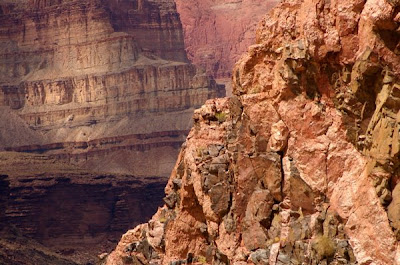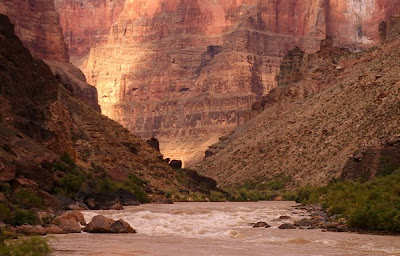
Pacific steelhead and salmon are in a crisis - not because we do not understand the causes for their declines. Instead, we know perfectly well what needs to be done but have insisted on following management practices that we know are harmful: excessive harvest, inadequate escapements, hatchery introductions, land use practices that are both unsustainable and detrimental to steelhead, and so on. We have further compounded the crisis by focusing our money and efforts on the stocks that are at the highest risk, while largely ignoring other stocks less at risk, all the while continuing to apply management regimes known to be harmful.
In my angling lifetime, we have learned how to effectively fish for steelhead during winter, spring, summer and fall. During that same angling lifetime, we have also greatly diminished our angling opportunity. Preserving that opportunity means rescuing whats left of wild runs and unbroken rivers. It will involve a colossal fight. Are we up for it?
Peter W. Soverell
Edmonds, WA
January 2006
From "A Passion for Steelhead." Dec Hogan, 2006
My own quest for steelhead began several years ago on Oregon's North Umpqua River, where my friend Ritch and I plied the swollen and off-color currents for a fish that neither of had ever seen or even knew much about. We both had come many miles in hopes of that chance encounter with this special fish, a fish that had traveled much further in its own quest. We left Oregon without even seeing much less hooking a steelhead, and this could easily have been the end. But that trip changed me. I became obsessed with steelhead: their humble beginnings in their natal rivers; their early lives as resident trout and their transformation to a brawny ocean fish; their shadowy life in the oceans, which may take them as far as Japan and Russia; and most of all, their incredible spawning escapement to the rivers and streams of their birth.
 I've spent the years last few years seeking out and absorbing everything I could about steelhead, their life, their range, their rivers, and their habits, and the tackle and techniques used in catching them. Trips followed to more rivers - The Deschutes, the John Day, the Grande Ronde. And I quickly became entranced not only by this incredible fish, but by the places it inhabited. Still, I continued to come back empty handed. Sure, I wanted to catch a steelhead, but the catching is a lot more than a chance at a free meal, more like a chance at a brief interaction with one of the most powerful life forces on the planet, a creature that would otherwise slip by unnoticed and unknown in the currents.
I've spent the years last few years seeking out and absorbing everything I could about steelhead, their life, their range, their rivers, and their habits, and the tackle and techniques used in catching them. Trips followed to more rivers - The Deschutes, the John Day, the Grande Ronde. And I quickly became entranced not only by this incredible fish, but by the places it inhabited. Still, I continued to come back empty handed. Sure, I wanted to catch a steelhead, but the catching is a lot more than a chance at a free meal, more like a chance at a brief interaction with one of the most powerful life forces on the planet, a creature that would otherwise slip by unnoticed and unknown in the currents.


Luckily I had some incredible resources at my disposal. Local steelhead fanatics like Steve Schmidt and his crew at Western Rivers Flyfisher in Salt Lake filled my head with stories of fishing the great rivers: The Skeena and it's tributaries, The Dean, The Salmon and Clearwater, and others. They introduced me to Dec Hogan, fabled northwest steelhead guru and now a Salt Lake local, who shared with us his love for this fish, the rivers they inhabit, and the beautiful, traditional flies that transfix the steelhead, and us. Steve and his crew also sold me my first Spey rod, a 14' for 8 wt rod, and held my hand while I struggled to learn to cast it. All the while, I felt I was gaining the understanding and outlook I had lacked in my previous outings, which would make that first steelhead that much more special. And I was right.



So, just as I have for the last several years when the leaves begin to change in the fall, I packed my bags and headed for steelhead country. This time, to Idaho's Salmon River near the town of North Fork, only 6 hrs from Salt Lake. And again I was accompanied by my friend Ritchy who had been there at the beginning. Steelhead fishing, especially with a fly rod, is not for everyone. Long hours, days, years in the water withoug hooking a fish can turn off even the most dedicated angler. But Ritchy, like myself, is always just happy to be out on the water. Catching a steelhead would be merely the icing. Just knowing they were there was enough to justify the price of admission.
On our first day on the water, Ritch and I both achieved something that had eluded us in all previous outings for steelhead. We had steelhead rolling on and biting at our flies. In the first run I fished on the Salmon, on probably the 10th cast, I rolled a steelhead near the surface on a green butt spey fly I had tied for the trip. From then on, I was fishing with a new found determination. I tried to make every cast, every mend, every motion count. And we continued to get enough action to keep us on the edges of our seats. We fished floating lines with surface and subsurface flies for the first four days on the river, and we continued to move fish. But still no hookups save a pair of beautiful Bull Trout I hand landed in the first couple days. Of course, I had already been more successful in these four days than in my previous three years of steelhead fishing. I was ecstatic! And yet, I knew that I could hook a fish, and I was determined to do so.
The nights got progressively colder as we camped on the banks of the Salmon, and the water temps began to drop. The river was still within ideal temps for fishing floating lines and unweighted flies, but I couldn't help but think that switching to sinking lines and deep swimming flies might improve our chances of actually hooking a fish. So, on our last day on the Salmon, Ritchy and I switched over to sink tips and I tied on an Ed Ward-inspired green and black Intruder.

We had fished a run the day before that just screamed steelhead. I had moved at least one fish as I swung flies through the run. As we rested at the bottom of the run after fishing through, another pair of anglers moved into the top of the run and one of them proceeded to hook and land a large hatchery steelhead, which was unceremoniously thrown up on the bank, no doubt destined for the smoker. I was a little put off because we were about to fish back through the run, and I was convinced one of us would have hooked that fish, but we moved on knowing that we had found a run that definitely held fish.


So we returned to that run on our last day on the river, and as I followed Ritchy through the run, it all came together. My fly suddenly stopped mid-swing, and my fly line came alive with a bolt of electricity. I slowly dropped the loop of flyline I held in my hand, and the line came taut to a fish. I knew right away that this was not a Bull Trout. I had hooked my first steelhead. I calmly muttered "fish on" and Ritchy turned around to see my fly rod bent and pulsing. He scrambled down to the boat to grab the camera as I suppressed my urges to start doing back flips. I still had to land the fish, after all.



 The real McCoy - a glorious wild Salmon River steelhead. This is what we must save.
The real McCoy - a glorious wild Salmon River steelhead. This is what we must save.
 "To hold and cradle a living, breathing animal so vibrant and alive is both an honor and a privilege never to be taken for granted." Dec Hogan, A Passion For Steelhead
"To hold and cradle a living, breathing animal so vibrant and alive is both an honor and a privilege never to be taken for granted." Dec Hogan, A Passion For Steelhead
"Even the small ones are larger than life." Dec Hogan, A Passion for Steelhead
At long last I got my first glimpse of a steelhead in the water, and instantly my eyes were drawn to a distinguishing feature - the intact adipose fin, indicating that this fish was of wild origin, a native fish. I was literally brought to my knees. With her tail in my hand, the barbless fly dropped easily from the corner of her mouth. And as quickly as it had begun, the encounter ended with the fish being released back into the currents, to continue on in it's epic journey, hopefully to find a mate and produce a new generation.
A reverent silence quickly gave way to whoops and high fives. Smiling from ear to ear, I collapsed onto the bank to savor the experience. All roads had lead to this run, this fish. I was overwhelmed. Putting together and executing a plan, and hooking a fish on the last day of the trip was like a fairy tale. And what more, a wild fish. One of only a handful that had made the journey all those thousands of miles, past countless obstacles, dams, and other fishermen.
What seemed like an unreal day only got more sublime as Ritchy, with dark falling on our final day on the river, hooked a fish as well. With our boat beached at the takeout and darkness quickly setting in, I heard Ritchy utter my name from behind me in the run. I turned to see his rod bent and pulsing. I couldn't believe my eyes. This time, I ran down the bank to grab the camera, and returned to see Ritchy's line still tight to the fish, which with some coaxing finally came to hand. I snapped a few pictures in the falling light, and we shared looks of utter disbelief. The fish was of hatchery origin, it's adipose fin clipped before releasing. But the fish was no less beautiful. We were free to keep her, but the thought of killing his first fly-caught steelhead was out of the question for Ritchy, and I shared his sentiment. The fish was released back to the currents.




Some might view fly fishing for steelhead as a selfish persuit, but I truly believe that in order to save these fish, we must continue to interact with them, and continue to allow ourselves to fall under their spell. If no one fished for steelhead or salmon, we could easily wipe out their remaining stocks without thinking twice. Instead, it is the anglers who spend their days on the rivers persuing them, and their nights dreaming about that next chance encounter, that will make ir break the future of these species. It's up to us to ensure that our future includes wild runs of steelhead and salmon, not only for the sanity of people like me, but for the health of our planet. I can't help but wonder, as Mr. Soverell penned in the afterword to Dec Hogan's beautiful book "A Passion for Steelhead," if we are up for it? I hope so.











































